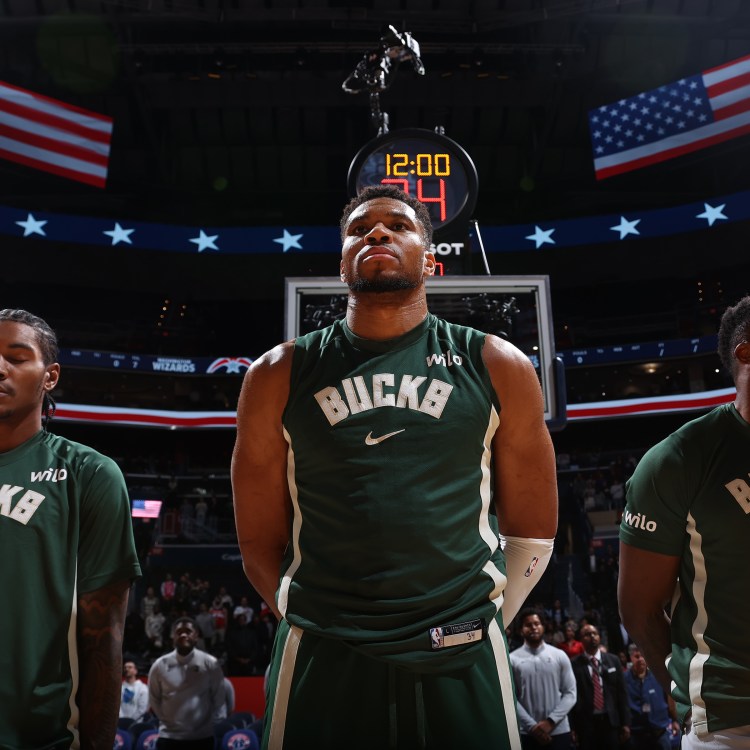This year saw an unprecedented barrage of home runs, topping all previous seasons (even those in the steroids era). The question is: Why?
Enter Professor Alan Nathan from the University of Illinois. He has extensively explored the physics of baseball, attempting to make sense of the sport where, as Willie Stargell put it, “They give you a round bat and they throw you a round ball and they tell you to hit it square.”
Nathan offered three possible reasons for the power surplus:
The Ball Is Juiced. Nathan said the baseball is “actually a fairly complicated object.” The core is called the “pill” and consists of cork surrounded by rubber. From there one finds “different types of yarn wrapped around it” and “cotton thread near the outside” and finally “you’ve got the leather” on the exterior. (Which is why we say a batter knocked the hide off the ball.)
To increase home runs, it’s necessary to up the coefficient of restitution: the ratio of the ball’s relative speed after collision to the ball’s relative speed before collision. In general, home runs abound when the ball gets bouncier/livelier, enabling it to go faster and farther. Nathan noted one possible method is to “wind it a little tighter,” though it’s by no means the only technique: “Changes in any one of these [parts of the ball] could conceivably make a difference.”
Different Aerodynamics. “If baseball were played in a vacuum, then as soon as you knew how fast the baseball left the bat and knew its launch angle, you could predict exactly where it would land,” Nathan said. However, we need to account for “air drag” which is shaped by factors including the density of the air (“temperature, elevation, whether there’s wind—all of those things matter”), the seams of the baseball, even how the baseball’s spinning. Let’s say that the baseball is slightly smaller and or the seams are slightly lower: either would reduce drag and let the ball travel farther.
Then there’s a chance the ball has remained the same but something else is different: the hitter.
Batters Are Consciously Swinging for the Fences. “The way that you hit more home runs is some combination of swinging harder and you have to get some loft to the ball,” Nathan said. (In terms of loft, the batter is “trying to get between 20 to 35 degrees launch angle.”) If batters are consciously deciding to elevate their swings, they may generate more outs on fly balls but they’ll likely drive more balls out of the park as well.
Nathan noted there may be another incentive for the angled swing. With “all the infield shifting that’s done nowadays,” players may reason it just makes sense to “get it over the infield” instead of hitting line drives.
As for producing those harder swings, the steroids era of baseball saw many players rely on performance-enhancing drugs to generate additional power. “Who knows, maybe some new form of steroids is the cause?” Nathan mused about the recent power surge. “I doubt it but maybe.”
Before attempting to find a definitive answer, let’s look back at how the home run has risen and fallen and invariably risen again throughout baseball history.
1884: The Mighty Ned. Ned Williamson’s 27 home runs for the Chicago White Stockings set a record that stood for over 30 years. Each team averaged .22 home runs per game this season, meaning you could watch a doubleheader and expect to see neither squad go deep at any point.
1917-1921: The Ruth Revolution. The Bambino transformed baseball with a stretch that is utterly unique in sports history and, indeed, borderline impossible.
1917: Exclusively a pitcher, Babe Ruth went 24-13 with a 2.01 ERA and led the majors with 35 complete games while hitting two home runs for the Red Sox.
1918: Still pitching (13-5 with an ERA of 2.22) but also playing the outfield, he tied for the major league home run title with 11. In the World Series, he went 2-0 with an ERA of 1.06 while driving in two RBI as Boston won their last Series until 2004.
1919: In his final year with the Sox, Ruth went 9-5 with a 2.97 ERA and clubbed a record-setting 29 home runs. Next highest total in the majors: 12. He began a three-year run of leading the AL in runs, RBI, on-base percentage, slugging, and of course homers.
1920: Now a Yankee, Ruth made only a single start as a pitcher. (He won.) He hit 54 home runs. Next highest total: 19. (Note: After this season the spitball was outlawed, making life easier for hitters in general.)
1921: Ruth made two starts as a pitcher. (He won both.) He hit 59 home runs. The #2 total: 24. The Yankees made their first World Series appearance. They lost, but Ruth hit the first of 15 career Series home runs.
In short: Ruth shattered the home run record in three consecutive seasons (he’d also up the mark to 60 in 1927) while demolishing the argument that swinging for the fences hurt your overall game. Players paid attention. In 1917, it was .13 home runs per team per game. By 1921, that figure had nearly tripled to .38. Baseball’s never looked back: it hasn’t gone below .36 homers in the century since.
1961: New Home Run King, Same Old Yankees. In a perfect storm of circumstances, the American League extended its schedule from 154 to 162 games while oft-injured Mickey Mantle stayed healthy enough to play 153 games and the guy batting ahead of him, Roger Maris, played 161. Mantle hit over 50 home runs for the second time to provide line-up protection for Maris, who clubbed 61 to take the record from Ruth. It wasn’t just the Yanks going deep either: team home runs per game jumped from .86 to a then-record .95.
1968: The Mound Goes Down. An incredible seven starting pitchers had ERAs under 2.00, led by Bob Gibson’s ludicrous 1.12. Home runs plummeted to .61 per team per game. Baseball decided hitters needed help. They lowered the mound from 15 inches to 10 inches, which reduced the velocity overhand pitchers could generate. They also shrank the strike zone from the knees to the shoulders down to the top of the knees to the armpit.
1969: Here’s to Hitting. With the new rules in place, home runs jumped to .80 per team per game.
1977: Better Balls for Bashing. MLB changed from Spalding to Rawlings balls (which are still used today). Home runs per team per game surged from .58 to .87.
1987: Year of the Rabbit Ball. Home runs per team per game reached 1.06, the first time MLB had ever topped 1.00. A belief spread that there was a “rabbit ball” in light of hitters putting up home run totals that dwarfed the rest of the decade. (It was .91 in 1986 and dropped down to .76 in 1988.)
1998: Fishy But Fun. In a home run race so thrilling no one noticed how suspicious it was until years later, Mark McGwire edged Sammy Sosa 70 to 66 as the Maris mark was obliterated and fans finally forgot the strike that canceled much of the 1994 season. From 1994 to 2009, home runs per team per game didn’t dip below 1.00. (A mark previously just achieved just once in baseball history.)
2000: A Serious Start. “In 2000, for the first two or three months of the season, home runs were way, way up,” Nathan recalled. “There were a lot of discussions about whether the ball was juiced.” It was around this time that the UMass Lowell Baseball Research Center was created. (Nathan noted that the dingers settled down as the year went on, with a final total of 1.17 for the season after 1.14 in 1999.)
2001: Okay, It’s Weird Now. At age 36, Barry Bonds set the new home run record with 73. While Bonds had been a tremendous all-around player his entire career, in his previous 15 seasons he’d never even managed to hit 50. In unrelated news that is in no way horrifying, reportedly Bonds’ hat size and foot size both increased. (You know, as happens to men in their mid-30s.)
2007: Seriously, Stop It. First, it was 714 by Babe Ruth. Then it was 755 by Hank Aaron. Now it’s … you have no idea, do you? Barry Bonds set the new career home run record with 762 while most fans just tried to ignore it.
2010: Keep It in the Park. In what surely had nothing to do with MLB’s new drug testing policies, home runs per team per game slipped to 0.95.
2015: Going… “The increase began right after the All-Star break,” Nathan said. For the season, they wound up at 1.01, a huge jump over 2014’s .86.
2016: Going… “You get a further increase in 2016.” Indeed, home runs per team per game reached a near-record 1.16.
2017: Gone! “You get a further increase yet in 2017.” Baseball reached 1.26 home runs per team per game, shattering all previous marks.
So what’s happening to baseball right now? Despite his research, Nathan admitted, “I don’t know the answer to this.” He noted that while we now can do laboratory measurements on balls, there’s the “sampling issue: you’re not testing every baseball that was ever used.” (Rest assured, he’s still exploring the topic—more on that momentarily.)
Nathan did offer some additional insights:
He Doesn’t Believe This Is a Scheme to Increase Homers and Attendance. Yes, home runs have traditionally boosted baseball’s popularity, from the Babe to Big Mac and Slammin’ Sammy. Even so, Nathan said his dealings both with people from the MLB office and Rawlings left him “convinced there’s no conspiracy to alter the balls.” Which doesn’t mean the balls aren’t juiced—it just means the change isn’t due to conscious design. There may indeed be something different “we don’t know about yet in the manufacturing process.”
We Have Info Today Early Generations of Fans Never Imagined. For instance, Nathan said we now measure “the exit velocity of nearly every ball” in baseball, essential data as we explore 2015-17.
Tiny Things Can Lead to Large Home Run Increases. Regarding the second half home run surge in 2015, Nathan found one could “pretty well account for that 25 percent increase in home runs with a 1.5-mile shift in the exit speed of a baseball.” (He found that roughly a “one mile per hour change in exit speed will lead to maybe a five-foot difference,” meaning a lot of balls once caught on the warning track reach the stands.)
Indeed, in general with baseballs, a “small little change can have a very big effect.”
Could Be a Combo. “It could be that there’s no single factor. It’s all three of those things and something else we haven’t thought of yet.”
Nathan continues to explore the matter, including trying to determine “how the exit speed [of a ball] depends on the launch angle.” If he can discover this, it “might be able to tell us if batters are swinging with a more uppercut swing or not.”
Regardless, Nathan will pursue the secret of the home run surge: “From a purely physics point of view, it’s a puzzle. And physicists like puzzles.”
Watch rookie Aaron Judge uphold the Yankee tradition of traumatizing pitchers below.
The Charge will help you move better, think clearer and stay in the game longer. Subscribe to our wellness newsletter today.


















